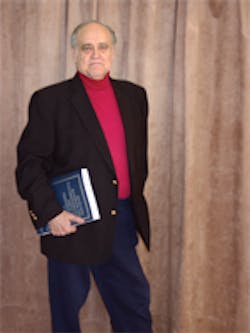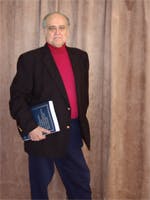Why mathematical models?
If you have been observing from the fringes, you may feel that mathematical modeling is rocket science. It isn’t — or, at least, it doesn’t have to be. A math model is simply an equation, or set of equations, that defines the physical relationships among variables and parameters. For example, the well-known equation relating force, pressure, and area given to us by Pascal, f = P A, is a mathematical model telling us how force, pressure, and area are interrelated.
In this math model, force and pressure are variables, while area is a parameter. We refer to this relationship often and with confidence. It allows us to explore the effects of changing any variable or parameter before committing to hardware. This simple model is of inestimable value.
Math modeling may seem intimidating because it often becomes rather complex. To apply Pascal’s law more realistically, we may take into account friction, fluid compressibility, pressure losses in components, pressure variations from a less-than-perfect pressure compensated pump, complex mechanical loading containing mass, inertia and bending of members, and maybe even some electronic controls.
Indeed, the circuits may be complex, and we need to know the physic a l l aws tha t govern component interactions. The flows, pressures, and forces add up, but in the end, the complex model is nothing more than a lot of relatively simple bits and pieces that define the components.
When all the components are connected together, mathematically that is, the result is a dynamic system model. Dynamic means we can determine how long it takes for movements and speeds to change with time — say, after an operator shifts a valve. The simulation will track the changes in pressures, flows, speeds, torques, and actuator positions millisecond by millisecond.
For example, we may be interested in trying to determine if a proposed design of a front-end loader can raise a rated bucket load over the side of a truck bed in the time expected for the operator to withdraw from a gravel source and spin around 180° to the waiting truck. Or the operator may have to stop moving forward and wait for the bucket to clear the side of the truck. We can determine if the prime mover has sufficient power to simultaneously propel the vehicle while lifting the bucket.
This is the kind of productivity-related question that can be answered by means of dynamic simulation using math modeling. In short, we can answer very complex questions before buying even one piece of hardware. The model will almost surely require revisions. However, it is far less costly to find out about a slow bucket before the loader is built than after it’s in production.
Complex system models begin with good component models. The National Fluid Power Association’s Tech Board has seen fit to initiate the development of math models of hydraulic pumps and motors as an official NFPA project. The Pump and Motor Committee, T 3.9, will be reviewing the first draft of a proposed set of models at its February meeting. Some of the model features are covered in this month’s “Motion Control.” Many more standardized models will be needed, so this is but a beginning.
Jack L. Johnson, P. E.
contributing editor
[email protected]


